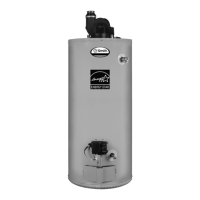
Do you have a question about the A.O. Smith ProLine XE GPDNL-40 Series and is the answer not in the manual?
| Brand | A.O. Smith |
|---|---|
| Model | ProLine XE GPDNL-40 Series |
| Category | Water Heater |
| Language | English |
Defines key roles and their responsibilities in installation and service.
Warning about fire risks, installation locations, and flood damage.
Dangers of severe burns from hot water, especially for vulnerable groups.
Risk of water tank explosion from overheating and improper relief valve.
Precautions when smelling gas, avoiding ignition sources.
Risks of improper installation or use leading to property damage.
Dangers of carbon monoxide poisoning and necessary precautions.
Risks from flammable liquids and vapors near the water heater.
Defines requirements for professionals performing installation and service.
Key steps and considerations before beginning the installation process.
Mandatory installation requirements for CO detectors.
Specifications for identification signage and vent system responsibilities.
Lists and illustrates key water heater parts for easy identification.
Explains the function and importance of mixing valves for safety.
Critical warnings and guidelines for safe electrical connections.
Describes high limit controls and blower air pressure switches.
Factors for choosing an appropriate indoor installation location.
Space needed around the heater for maintenance and part replacement.
Minimum distances required from flammable materials.
Requirements for floor installation and high ambient temperatures.
Ensuring adequate ventilation for combustion and operation.
Guidance for connecting water supply lines and preventing leaks.
Precautions and warnings regarding dangerously hot water temperatures.
Requirements for systems combining potable water and space heating.
Component standards and requirements for combo heating applications.
Specific steps for installing combo heating systems.
Explains thermal expansion and its impact on tank integrity.
Caution regarding water heater damage and proper installation.
Risks of excessive pressure and improper T&P valve use.
Rules for safe installation of the T&P valve discharge pipe.
Caution about hot water discharge from the relief valve.
Risks associated with gas supply lines and connections.
Specific requirements for operating the heater at higher elevations.
Risks of gas contaminants and proper sediment trap installation.
Caution about water heater damage and filling procedures.
General rules for safe and efficient vent system installation.
Lists parts included in the standard vent kit.
Specifications for standard side wall vent locations.
Specifications for standard roof vent locations.
Details a specific vent terminal type.
Steps for connecting vent piping to the air box.
Provides part number for a specific O-ring.
Step-by-step guide for installing the low profile vent kit.
Guidelines for spacing multiple concentric vent kits.
Permitted use of tee fittings for vent terminations.
Details materials like PVC, CPVC, ABS, and Polypropylene.
Specific instructions for installing polypropylene vent systems.
Rules for routing vent pipes to prevent condensation and blockages.
Rules for proper vent termination location and clearances.
General guidelines for preparing for vent pipe work.
Details materials like PVC, CPVC, and their requirements.
Instructions for applying primer and solvent cement.
Steps for preparing pipe ends for proper joining.
Checking joint fit and applying solvent cement correctly.
How to connect vent piping to the blower assembly.
Post-cementing cleanup and joint movement.
Managing condensation in the exhaust vent system.
Managing moisture accumulation in the air intake piping.
Critical safety warnings and pre-operation checks.
Step-by-step guide for safely starting and operating the heater.
Steps for safely shutting off the gas to the appliance.
Precautions regarding dangerously hot water temperatures.
Explanation of condensation appearing during initial operation.
Normal initial conditions like smoke, odor, and sounds.
Causes and remedies for water odor and hydrogen gas risk.
Routine checks and cleaning for the water heater.
Annual checks for obstructions and deterioration in the vent system.
Annual inspection of burner and igniter for proper function.
Procedure to test the relief valve for proper operation.
Steps for draining sediment from the water heater tank.
Procedure for flushing the tank after draining.
Caution regarding anode rod inspection and replacement.
Guide to identifying and correcting sources of water leaks.
Explains lockouts and procedures for resetting the control.
Details ignition sequence timing for troubleshooting.
How to interpret error codes indicated by the LED.
Common causes and solutions for low hot water supply.
Causes and remedies for excessively hot water.
Reasons for slow hot water replenishment and solutions.
Potential causes for T&P valve weeping or dripping.
Identifying and resolving odor issues in hot water.
Explains condensation issues and their resolution.
Troubleshooting common water leakage points.
Potential causes for an overheating exhaust pipe.
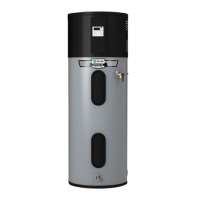
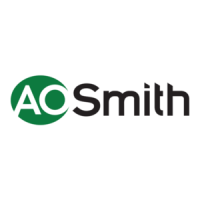
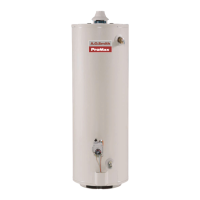

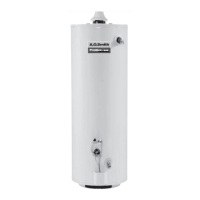



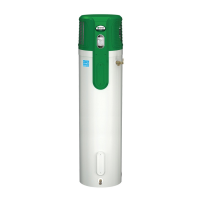
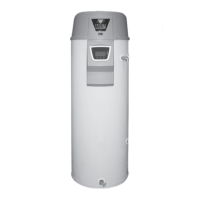
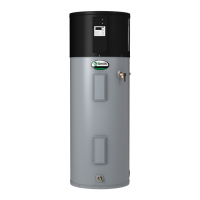
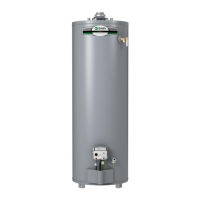
